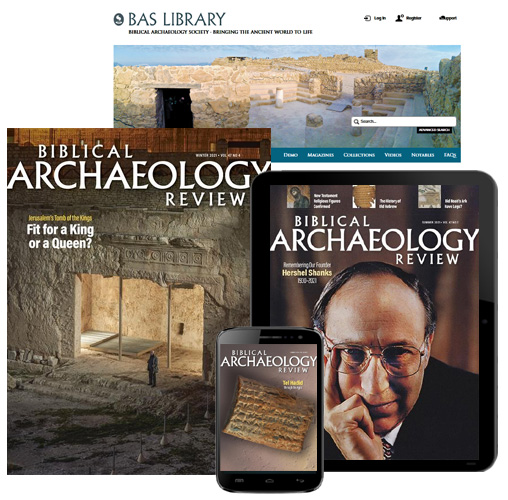The Church of the Holy Sepulchre’s History
CONTACT:
Megan Sauter
Email: [email protected]
1-800-221-4644 ext. 242
FOR IMMEDIATE RELEASE
WASHINGTON, D.C. (March 30, 2021)—Take a pilgrimage to the Church of the Holy Sepulchre, the holiest site in Christendom, in the Spring 2021 issue of Biblical Archaeology Review. Situated in the northwestern section of Jerusalem’s Old City, the church commemorates the traditional location of Jesus’s death, burial, and resurrection. With 22 chapels, a crypt, and many other features, the church complex covers a total area of roughly 1.25 acres and rises 112 feet at its highest point.
In his article “The Holy Sepulchre in History, Archaeology, and Tradition,” published in the Spring 2021 issue of Biblical Archaeology Review, Justin L. Kelley examines historical texts and recent archaeological investigations to reconstruct the site’s rich history. From execution spot to magnificent church, it has gone through quite the transformation!
Before there was ever a church in this location, there was a stone quarry. Standing outside the walls of ancient Jerusalem, the stone quarry functioned sporadically during the first millennium B.C.E. and first century C.E. Excavations reveal that the quarry also served as a burial site. According to the Bible, this area additionally functioned as an execution site called Golgotha in the first century C.E.
After Jesus’s lifetime, Jerusalem witnessed two major Jewish revolts against Roman rule. Rome retaliated, burning the city and Temple in 70 C.E. and transforming Jerusalem into a Roman city, renamed Aelia Capitolina, in 130 C.E. During the development of Aelia Capitolina, the Roman emperor Hadrian built a temple—likely dedicated to the goddess Fortuna—at the site of the old quarry.
In the fourth century C.E., the Roman emperor Constantine, who had converted to Christianity, authorized the demolition of the Hadrianic temple and the construction of a church to commemorate Jesus’s resurrection. His engineers built a magnificent church named the Church of the Resurrection.
The Church of the Resurrection underwent reconstructions in the 11th and 12th centuries. After the latter, it was renamed the Church of the Holy Sepulchre. Although control of Jerusalem and the Holy Land has changed many times in the past millennium, the Church of the Holy Sepulchre has changed very little since the 12th century. Elements have been repaired and restored—with the most recent restoration taking place in 2016–2017. Nevertheless, the church’s form has largely remained the same.
Justin L. Kelley prepared a detailed plan of the church complex. For anyone planning to visit the Church of the Holy Sepulchre, this plan is an invaluable resource.
Must-Read Free eBooks
Want more Bible history?
Sign up to receive our email newsletter and never miss an update.
All-Access Pass
Dig into the world of Bible history with a BAS All-Access membership. Biblical Archaeology Review in print. AND online access to the treasure trove of articles, books, and videos of the BAS Library. AND free Scholar Series lectures online. AND member discounts for BAS travel and live online events.
Subscribe Today







